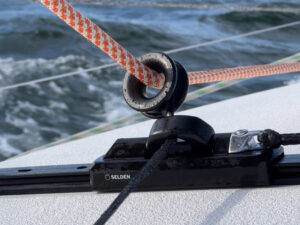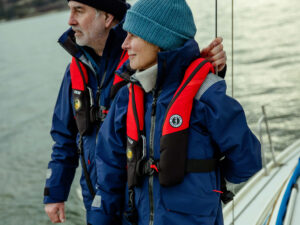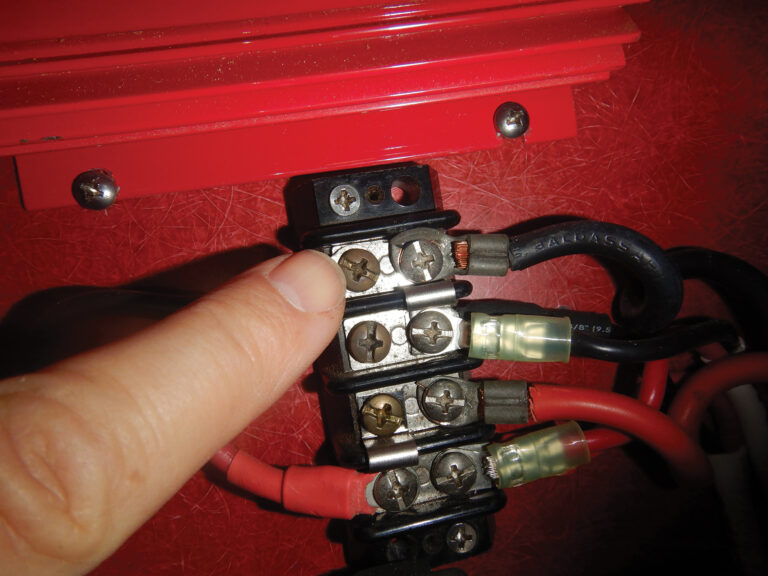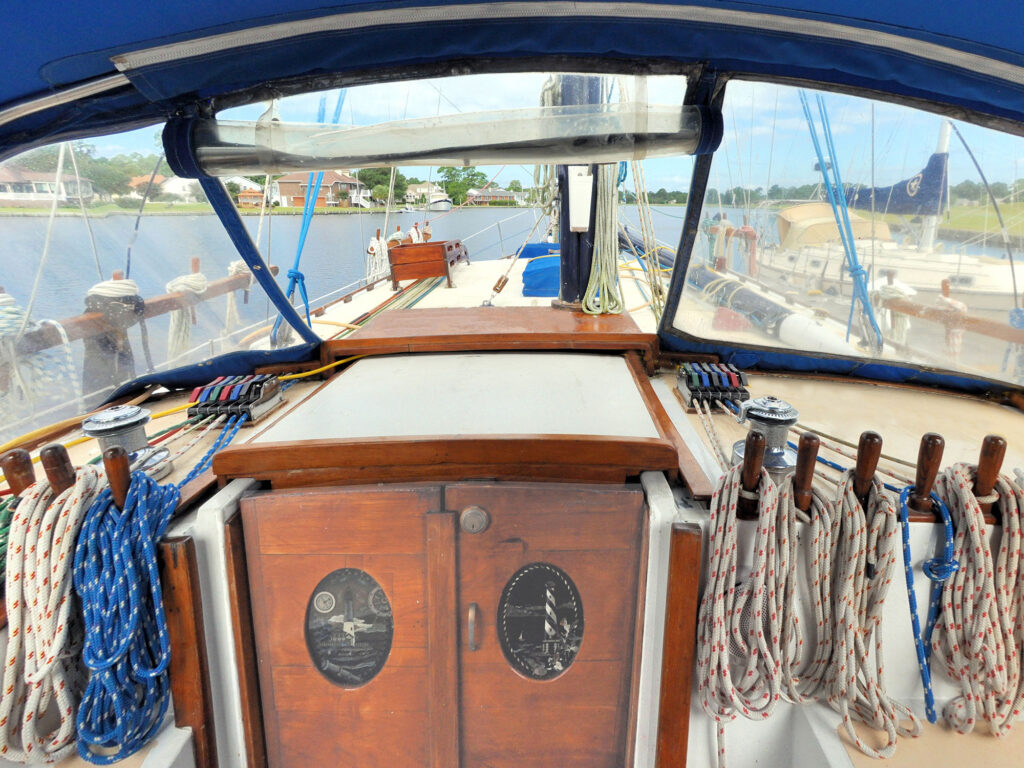
I was at Sheppard’s marina in Gibraltar as a blustery easterly levanter sent strong gusts swirling around the rock and the docks.
A powerboat was trying to tie up. At the bow, a woman was ready to heave a line to the dockhand, but the skipper was having great difficulty with the wind blowing the boat off the dock again and again. Tempers were clearly at a height when she finally heaved the line successfully to the dockhand, who made it fast to a cleat—but as the boat fell away again, the line slipped out of the fairlead and fell into the water. Evidently, it had not been secured to the boat.
There was yelling. After the boat was finally secured, the woman stormed down the dock. I never did see her come back.
Years later at a boat show in Annapolis, Maryland, I was intrigued by advertising for “the marriage saver.” Cruising Solutions was selling wireless headphones that let two or more people talk in normal tones. The kit had microphones and earpieces like you see pilots wearing, including a battery charger and spare ear foam, all in a stowage box.
The main feature that distinguishes these headsets from, say, handheld VHF radios or walkie-talkies is the two-way simultaneous conversation. The headsets feel almost like talking on a telephone, with what is technically called duplex transmission. And, the headsets are hands-free. I grabbed a set at the reduced show price to use on my 52-foot schooner Britannia.
These headphones are worn with an arch around the back of the head, not atop the head. The lightweight earphones hook over the top of the ears. It’s all quite comfortable, and the microphone sits close to the mouth. The headphones won’t fall off when you bend down, or even during upside-down contortions in an engine room. My wife, Kati, also likes the way they fit under her hair and can hardly be seen. They also don’t impede hearing aids or sunglasses, and you can wear any sort of headgear with them.
The internal lithium batteries can be charged with USB cables or a laptop with a USB plug. After a 90-minute charge session, there’s an eight-hour continuous talk time with a range of 800 feet. The warranty is two years.
Switching the headsets on is easy, by pressing two buttons. Kati and I were able to chat in normal tones in separate rooms in our house, and with one of us upstairs. They also deadened the sound of my noisy lawnmower.
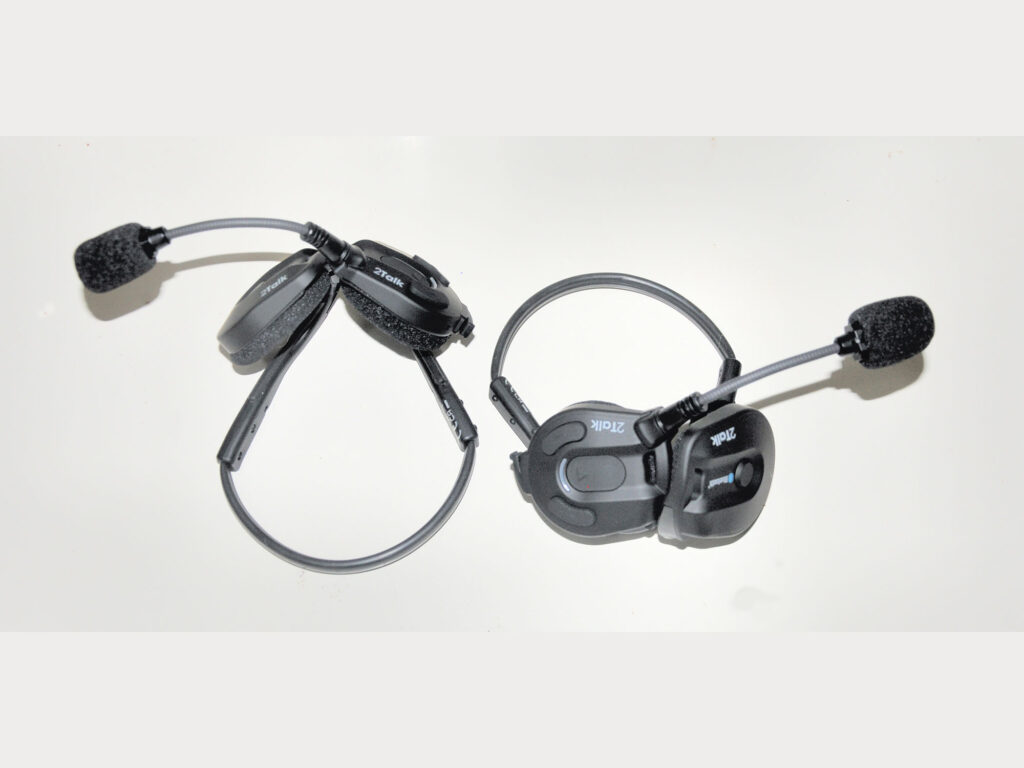
Volume is adjusted on the earpiece control, and sound comes out of both earpieces, so the most extraneous noises are subdued. You can also listen to music via Bluetooth. When someone speaks, the voice overrides the music.
Four people can be joined into a conversation, and they can all hear one another speaking, but nobody else with a similar device on another boat can tune in. For larger crew, Cruising Solutions has another product that brings an infinite number of people into the loop. That system also allows the lead person to control who can listen, as needed.
A problem I always had when picking up mooring buoys was lining up my schooner so my wife could hook the tether line. It is 40 feet from the helm to the bow, and two masts and booms impede the use of hand signals. I also had to roll up the isinglass to hear information that she shouted from the foredeck. Not anymore: Every time we succeed without hassle, we say that 2Talk is marvelous and that we should’ve bought this amazing helper years ago.
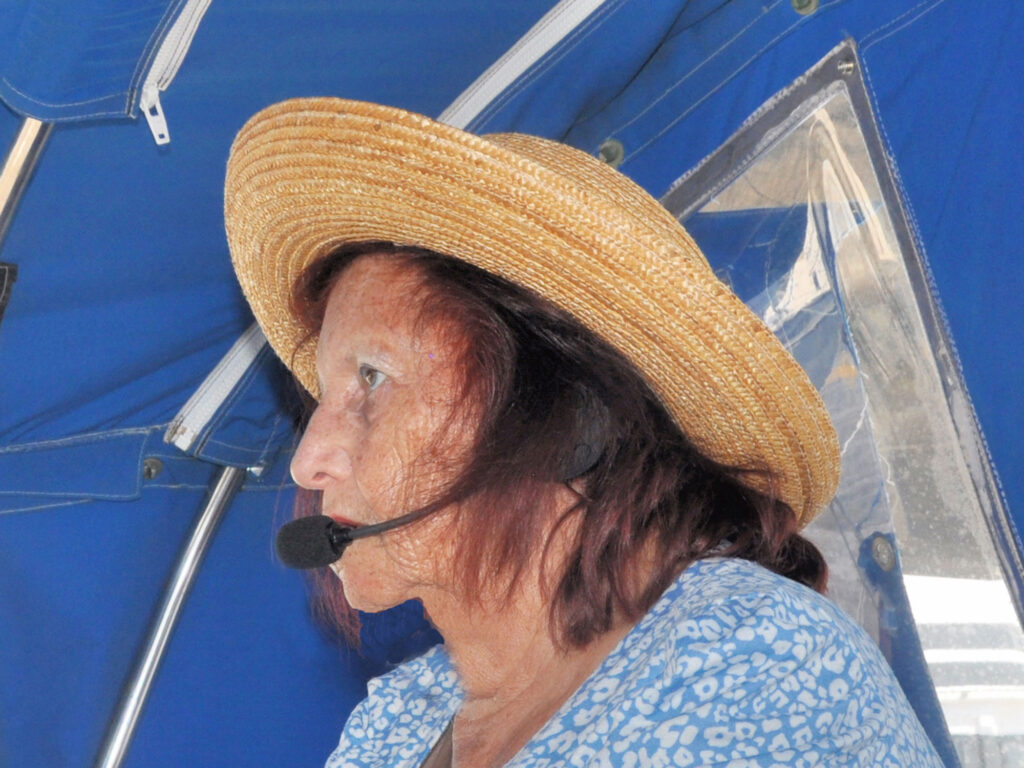
Another situation where this system comes in handy is whenever we anchor. I go forward to prepare the 65-pound CQR while Kati is at the wheel. I used to shout to ask the depth, and Kati would yell the reading from the depth gauge. Now, the depth comes in quietly through the earphones. I can ask her to ease the boat slowly astern as I let out more chain and finally snub the anchor in, and then ask her to disengage the engine. To onlookers, it must seem as if we are an amazingly synchronized professional team. Or, perhaps, telepathic.
Another benefit became clear the first time I went up Britannia’s 57-foot mainmast with the headset on. Communicating with the people on deck had always been difficult, especially if there was a breeze and I needed to shout. On occasion, I was left swinging in the air while Kati went to find a wrench or drill. Now, I can help her locate it or an alternative tool, all from a distance.
I don’t know if these headphones would’ve saved the couple in Gibraltar, but this tech is some of the best $320 I have spent on boating in a long time.

